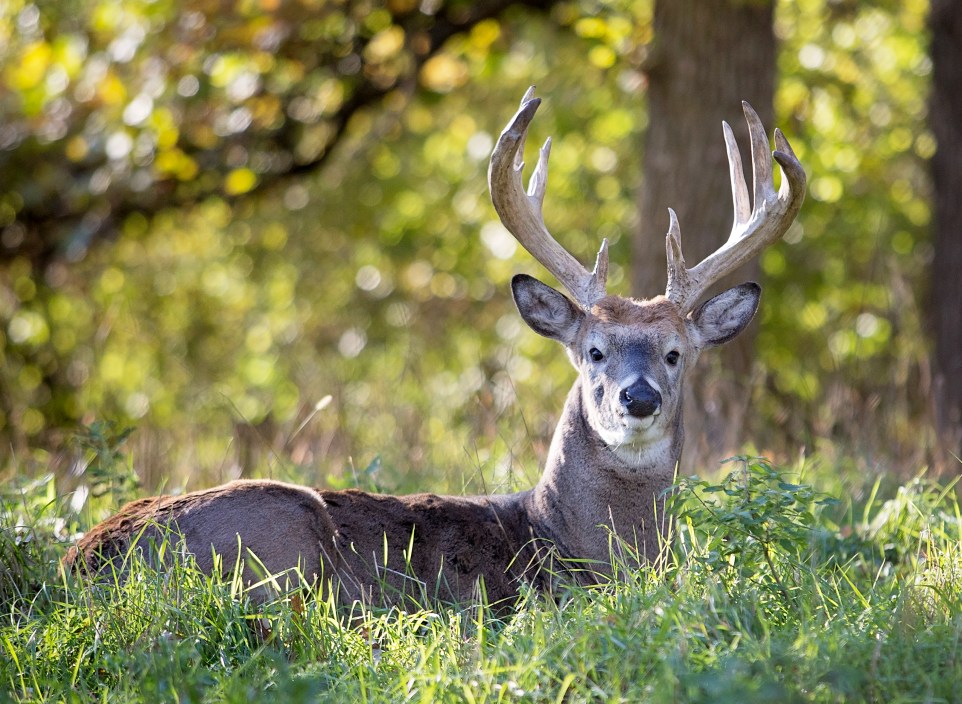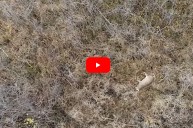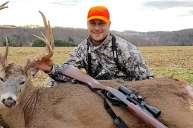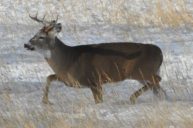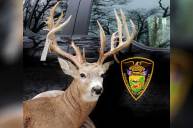It was a balmy day in the middle of rifle season in upstate New York the first time I caught buck fever. I was on watch, deer hunting high up in a treestand hidden in a grove of hardwoods. There were "runway" clearings to both my right and left, and deer were known to pass by this area frequently. I was familiar with my firearm and had practiced shooting it before the season. It was accurate. I was prepared.
And then I saw antlers for the first time. A buck emerged from the forest thickets, walking diagonally to my left. It was the moment of truth.
Suddenly, my breath quickened and my chest pounded. I struggled to maintain control. I shook like a leaf in the breeze. Every movement I made felt huge and noisy. I picked up my rifle, pointed my crosshairs at the buck, and squeezed the trigger. The gun went off—and all I'd done was skim some fur off the buck's side.
I'd shot too quickly. I hadn't taken time to steady my sights. I'd missed my shot at harvesting a deer.
The culprit, I've since realized, was the adrenaline rush of "buck fever."
Buck fever is a very real phenomenon that happens to plenty of big game or whitetail deer hunters. It is very common for first-time hunters, or when someone gets their first deer, but it even happens to seasoned pros. Buck fever can strike whether you're bowhunting, rifle hunting, or muzzleloader hunting, and it doesn't just apply to hunting for big bucks. You can have buck fever while hunting for any number of game.
Buck fever is more than simple nervousness. It's an actual physical reaction to the intensity of the moment. Symptoms vary from hunter to hunter and can range from shakiness and sweaty hands to breathing trouble, dizziness, increased blood pressure, or even chest pain.
Buck Fever Is the Body's Response to Stress
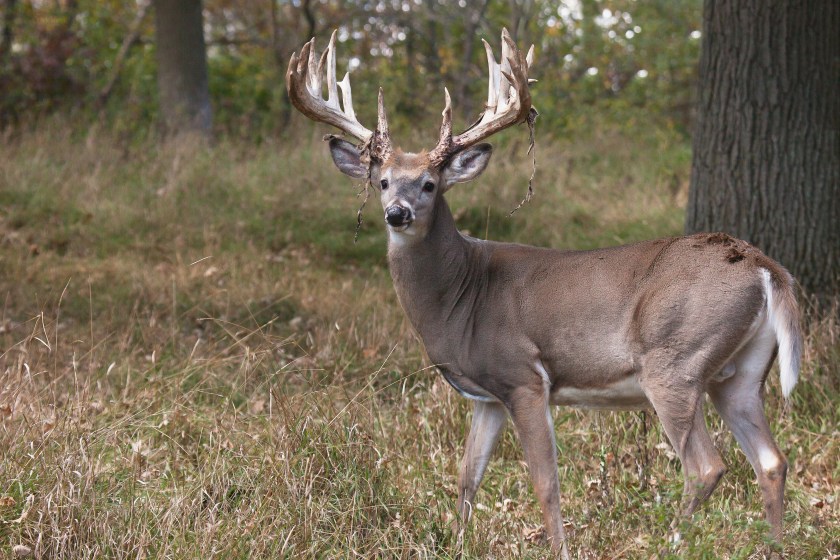
Getty Images, Lynn_Bystrom
The main chemical behind what we hunters call "buck fever" is adrenaline. When the body perceives a threat or a stressor—in this case, the monster buck—its sympathetic nervous system, led by the brain, triggers an emergency reaction (or, a fight or flight response) in the form of a boost of adrenaline coursing through the blood. That adrenaline surge boosts blood flow to the muscles. This is a completely natural response to a stressful situation and is meant to help you survive. But it can cause some unpleasant side effects, including shortness of breath, tremors or shakes, confusion, and more.
"It's a powerful stimulant that increases blood pressure, heart rate, and metabolic pressure," Dr. Jeffrey B. Michel, a cardiologist and clinical assistant professor at the Texas A&M College of Medicine, explained to Science Daily. "It's like pushing a gas pedal on a car."
The application of adrenaline to your body, when controlled, can be extremely helpful—for instance, in treating cardiac arrest. However, short-term spikes in adrenaline are annoying at best but also can cause missed shots or, even worse, hunting accidents.
"Hunting is supposed to be a calm, thoughtful, and careful process," Michel said. "Adrenaline is not good for being any of those things."
How to Overcome Buck Fever
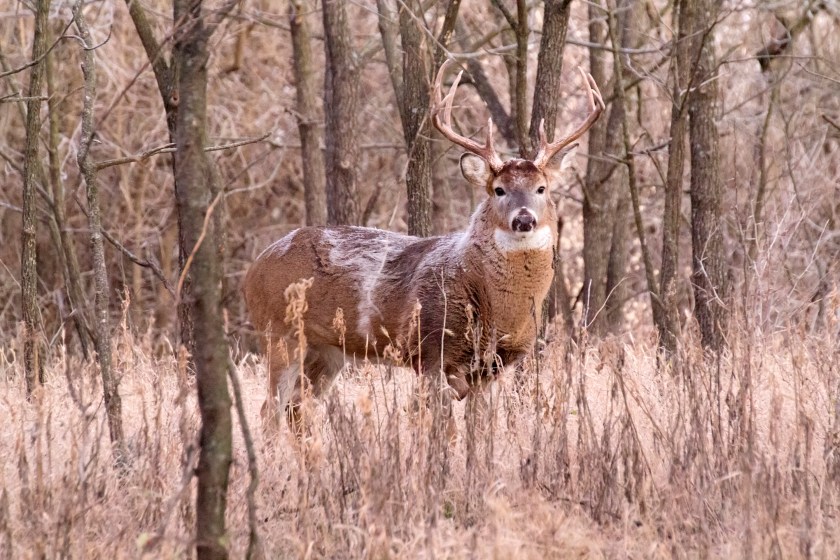
Getty Imagrs, ricardoreitmeyer
If you think about it, "buck fever" really is a nervous, panicky response triggered by your body's release of adrenaline when you see a big buck. The point is, if you let it, buck fever can mess up crucial moments of the hunt. But you can remain in control. There are ways to combat buck fever, including breathing exercises, visualization, and a little bit of extra mental self-discipline in preparation for a hunt.
Deep breathing, or taking deep breaths, can increase the oxygen supply to the brain, which promotes calmness and combats the panic of adrenaline during buck fever. As soon as you feel the symptoms of buck fever, try to squash the reaction by taking a few deep belly breaths and counting to five before exhaling slowly.
Another variation of deep breathing is tactical breathing, or "box breathing," which is taught to Navy SEALs as a method to help them perform better under intense pressure. It is basically breathing in, holding your breath and then exhaling, all to the count of four. First, take a deep breath into your stomach while mentally counting to four. Hold your breath and count to four. Exhale slowly to a count of four. Repeat the process until your body and mind are calm.
Another strategy to use against buck fever is to be sufficiently prepared for the moment. For hunters, this means lots of practice in scenarios that mimic real-life hunting conditions. Shoot your gun or bow from a variety of angles. Shoot it while in a treestand if that's where you hunt. Shoot it while sitting in a blind. Shoot it while sitting on your actual hunting chair or stool. If you hunt from the ground, practice with your rear end on the ground. Practice in the rain, too, if you might find yourself hunting in the rain. Be prepared for every single scenario that might occur. Be overprepared. Spend as much time as possible at the shooting range. This will increase confidence in the field—and when that big buck steps into view, you'll find it easier to control that buck fever feeling.
One more tactic to defeat buck fever is visualization, which is the act of mentally envisioning a situation and how you would react to it. It's not some new-age nonsense. Visualization is well known in the professional sports scene. The trick is actually doing it consistently.
Take some time to sit quietly and imagine a typical hunting scenario, whether that's in a blind, a treestand, or tracking in the mountains—however you hunt. Picture the deer coming into view. Then picture yourself holding it together and successfully executing a shot while cool, collected, and under control. Also envision buck fever starting to creep up, and then picture yourself breathing through it and maintaining composure.
Think through all possible scenarios, all types of weather, lots of different variables. Imagine the buck is broadside, quartering to and quartering away. Imagine the absolute biggest buck you've ever seen stepping into range and you taking a good shot, sinking your bullet or broadhead exactly in the vital area.
While visualization isn't a substitute for real-life experience, it's the next-best thing. On that note, the absolute best thing to combat buck fever is simple experience: living through it, applying the methods that work best, overcoming, and trying again.
